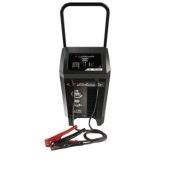brandnewb
Going for serious. starting as newb
Would it be feasible/advisable to DIY a LifePO4 battery (pack) charger?
I am considering DIYing the following;
240V/50Hz(AC) power outlet -> 2 string cable -> Full Bridge Rectifier -> DC step down transformer (Transform DC Voltage to a voltage that matches with the battery pack down the line) -> charge battery pack with the power that is available from the power outlet.
If that is a good idea then can I do the same concept but then use a 3 phase source?
400V/50Hz(AC) power outlet -> 3 string cable -> Full Bridge Rectifier -> DC step down transformer (Transform DC Voltage to a voltage that matches with the battery pack down the line) -> charge battery pack with the power that is available from the power outlet.
Or would any of those ideas result in bad stuff?
I am considering DIYing the following;
240V/50Hz(AC) power outlet -> 2 string cable -> Full Bridge Rectifier -> DC step down transformer (Transform DC Voltage to a voltage that matches with the battery pack down the line) -> charge battery pack with the power that is available from the power outlet.
If that is a good idea then can I do the same concept but then use a 3 phase source?
400V/50Hz(AC) power outlet -> 3 string cable -> Full Bridge Rectifier -> DC step down transformer (Transform DC Voltage to a voltage that matches with the battery pack down the line) -> charge battery pack with the power that is available from the power outlet.
Or would any of those ideas result in bad stuff?





